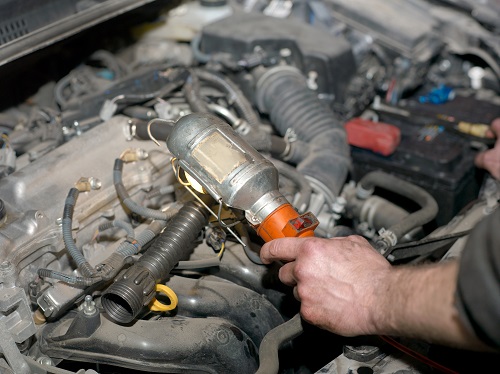A lot of people are against the LS swaps because they think small block engines are better. There are a lot of similarities and differences between these two engines. You may not see much of a difference at first glance in the appearance especially.
The Gen I small-block 350 and the LS1 have about the same cubic inches, use a single camshaft, and offer two valves per cylinder. Yet LS emerges better than a small block in many ways. In this blog, we’ll explore the areas where LS exceeds small block engines so you can buy the best used Chevy engine when the time comes
Comparing LS and Small Block Engines
The Block
You might think that all LS blocks are lighter than the original smaller blocks, but they are not. The original small block Chevy weighed 190 pounds. The LS aluminum block weighs only 115 pounds, while the steel unit weighs 215 pounds. The LS’ extra weight is related to block resistance, making it much more robust than the smaller blocks of a few years ago. The LS has a skirt design that extends the sides of the engine to the main cap.
Rotating Assembly
The LS stock crankshaft can handle tons of power. LS has countless times reached the 1,000-horsepower mark in 7 seconds of running. Using a small block allows him to put out 500 horsepower with the stock crank. The LS also uses a hypereutectic piston. These pistons expand less when heated, resulting in tighter tolerances and less wear compared to previous cast units. The rods are also different for LS and SBC. The LS uses powder metal connecting rods.
Cylinder Head
The cylinder head is where all the magic of the LS platform happens. Most LS heads are made from aluminum. They all have spark plug relocations, better chamber designs, and vapor vents to eliminate hot spots in the cooling system. These vents allow for cooler operation and ultimately higher compression, resulting in more power.
Induction
That combo still works, but it’s not as efficient as his EFI system on the LS. Because the LS intake is plastic, it is less susceptible to heat, resulting in a cooler air charge and more horsepower.
Valve Train
The LS has a larger camshaft design. That is, it has a larger diameter than the cams originally used on older Chevrolets. This results in a smoother transition to the cam and less impact on the valve train. Chevrolet switched to small block roller jacks in 1987, but all LS platforms still use roller jacks.
Final Thoughts
This blog just scratched the surface of the differences between the LS and small-block engines. Yet it is clear that LS engines are far superior in comparison. So, make an intelligent decision when exploring Chevy used engines for sale with a warranty.

